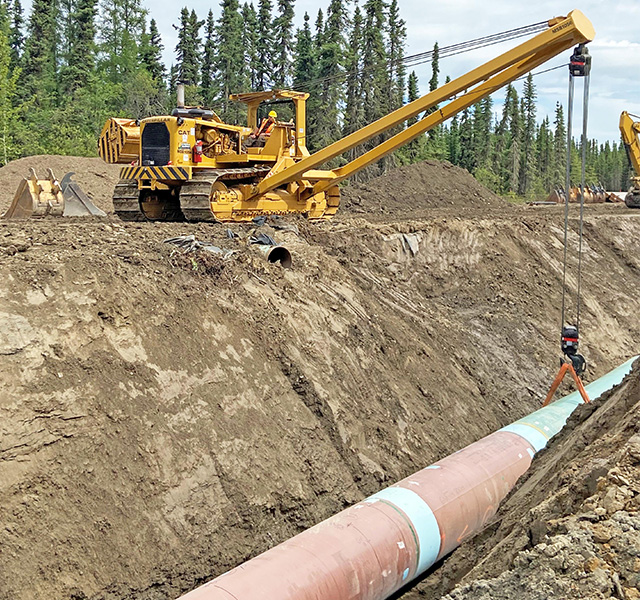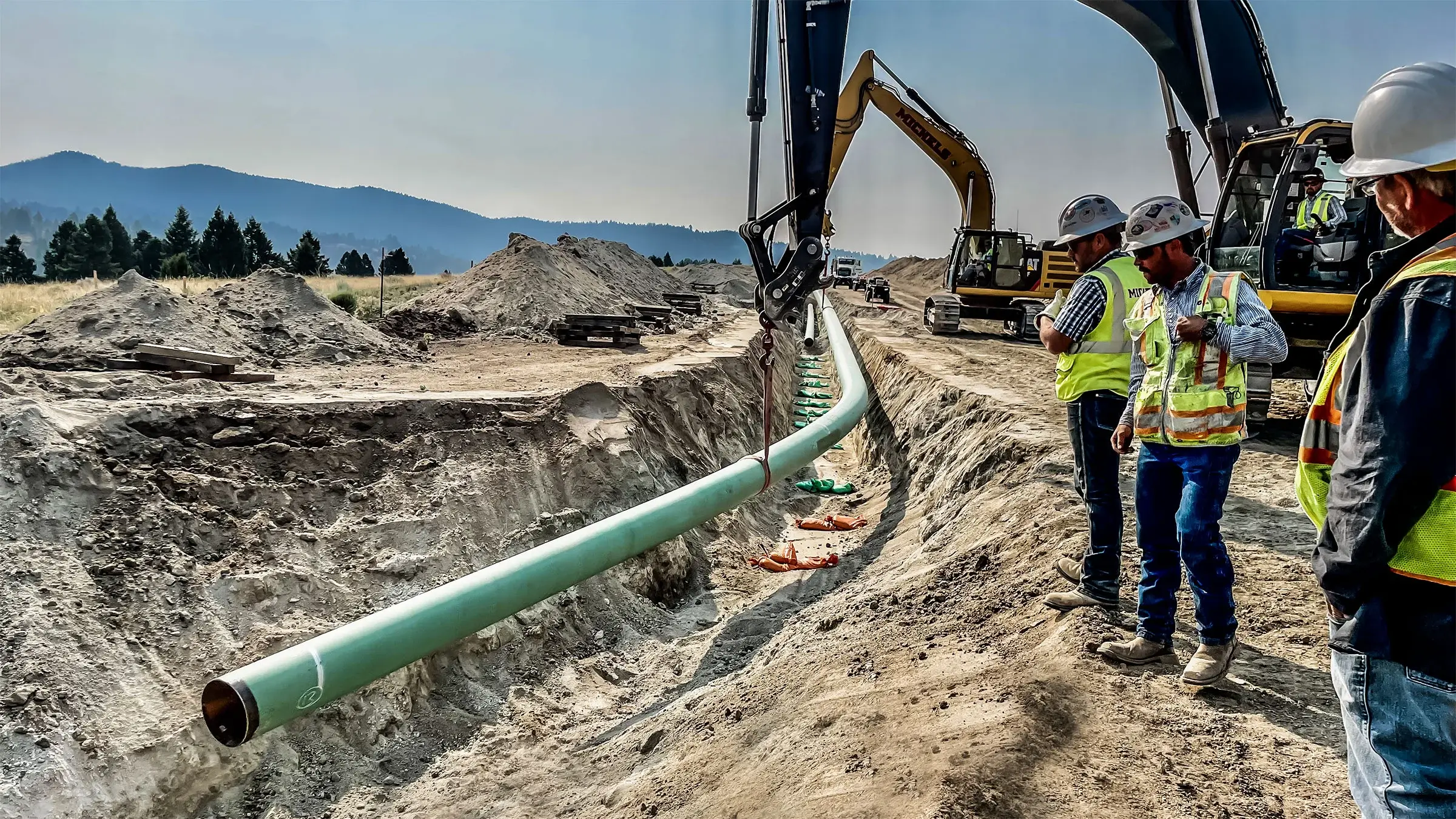Contractor’s Checklist to Working With Creek Pipe near me
A Deep Study Pipes Installation: Essential Factors and Factors To Consider for Effective Projects
Effective pipe installation is a critical element of engineering jobs. It includes a variety of aspects, from material choice to exact sizing and style. Each choice can notably impact the system's efficiency and long life. Understanding these elements is essential for avoiding pricey errors. Creek Pipe HDPE installation. As groups browse via the complexities of installation, numerous essential considerations emerge that warrant interest. What are the essential aspects that can make or break a piping task?
Recognizing Pipe Materials and Their Applications
When selecting pipe materials, one should think about the specific applications and ecological conditions they will deal with. Different products use distinctive properties that deal with different needs. For circumstances, PVC is light-weight and immune to rust, making it excellent for water circulation systems. On the other hand, steel pipes supply stamina and resilience, ideal for high-pressure applications however might need safety coatings to stop rust.Copper pipelines are favored for pipes because of their antimicrobial residential or commercial properties and simplicity of installation, while polyethylene is frequently utilized in below ground applications as a result of its adaptability and resistance to cracking.The selection of product additionally pivots on temperature level extremes, chemical direct exposure, and installation place. For high-temperature applications, materials like CPVC or PEX can be beneficial. Eventually, comprehending the attributes and restrictions of each product aids in making informed decisions that enhance system efficiency and longevity.
Relevance of Correct Sizing and Layout
Appropriate sizing and design of pipes are vital for making sure suitable flow rates and minimizing stress loss. These aspects likewise play a considerable role in determining the compatibility of products utilized in the installation. A methodical method to sizing and design can significantly improve the effectiveness and durability of a piping system.
Impact on Circulation Rates
Flow rates in piping systems are critically affected by the sizing and design of the pipelines. Effectively sized pipes guarantee that the liquid can move successfully, lessening turbulence and making best use of circulation capacity. Extra-large pipes can result in decreased flow velocities, while undersized pipelines might limit circulation, leading to increased rubbing and potential obstructions. The layout should additionally take into consideration elements such as pipe material, interior surface level of smoothness, and design, as these add to the general efficiency of fluid transportation. Additionally, the setup of fittings and connections within the system can impact circulation rates. As a result, meticulous attention to pipe sizing and style is necessary for enhancing circulation efficiency in any type of piping installation project.
Pressure Loss Considerations

Just how can push loss substantially affect the performance of a piping system? Stress loss is a vital element that can substantially diminish the efficiency of fluid transportation systems. When pipes are improperly sized or created, extreme pressure loss might occur, resulting in reduced flow prices and increased energy intake. This inadequacy can lead to higher functional expenses and prospective system failings. Appropriate sizing and style are vital to lessen pressure loss, ensuring that liquid characteristics remain excellent throughout the system. Designers need to thoroughly consider variables such as pipe diameter, size, and material to accomplish an efficient equilibrium. Eventually, addressing stress loss during the layout phase can boost dependability and longevity, making it indispensable for successful piping jobs.
Product Compatibility Elements
Stress loss is not the only element that can impact the efficiency of a piping system; product compatibility likewise plays a significant function in total efficiency. Making sure that the materials made use of in a piping system work with the fluids they will certainly move is essential. Different products can respond adversely to various chemicals, causing deterioration, degradation, or contamination. This can eventually compromise the stability of the system and impact its long life. Furthermore, appropriate sizing and design are necessary to suit thermal development and tightening, which can further influence material performance. Assessing variables such as temperature level, pressure, and chemical composition is vital in picking appropriate products, therefore improving system integrity and decreasing upkeep costs in the long term.
Strategies for Accurate Pipe Installation
Exact pipe installation is important for assuring system efficiency and longevity. Several strategies can enhance the accuracy of this procedure. Cautious dimension is necessary; installers should make use of top quality tools such as laser levels and tape measures to identify the precise sizes and angles required. Next off, appropriate pipe cutting strategies, like making use of a pipeline cutter rather than a hacksaw, assurance clean edges that facilitate much better links. In addition, making use of positioning devices, such as pipe jigs, can notably boost precision during assembly. It is likewise suggested to consider thermal expansion; permitting adequate spacing and development joints can prevent future imbalances. Lastly, the installation group must follow maker standards to follow details suggestions associated with each pipe type. By applying these methods, the chance of leakages and system failings reduces, inevitably contributing to a more trusted piping system.
Ensuring Pipe Positioning and Assistance
Appropriate placement and assistance are critical to the integrity and efficiency of any type of piping system. Imbalance can cause increased anxiety on joints, prospective leakages, and minimized effectiveness. To guarantee correct placement, it is vital to use appropriate devices such as laser degrees and positioning gauges. These tools aid achieve precise positioning, assuring that pipelines are installed according to layout specifications.Support systems must be made to accommodate thermal growth and contraction, along with the weight of the pipes and their materials. Picking the ideal kind of assistances, hangers, and braces is necessary. Each should be installed at defined periods to stop drooping or unnecessary stress and anxiety on the pipes. Normal assessments following installation can help identify any kind of misalignments or indicators of inadequate support. By focusing on positioning and support, one can substantially improve the durability and functionality of the piping system.
Usual Installation Errors to Prevent

Examining and Evaluation for Quality Control
Although the installation procedure might appear complete, extensive testing and examination are critical to ensuring the lasting reliability of a piping system. Different approaches are utilized to analyze the honesty of the installation, including stress examinations, aesthetic inspections, and non-destructive screening (NDT) techniques. Pressure tests validate that the system can withstand operational conditions without leaks, while aesthetic evaluations help identify any type of noticeable issues in the pipes or joints. NDT techniques, such as ultrasonic or radiographic testing, supply understandings into the material integrity without endangering the system.Additionally, recording the testing results is important for future referral and conformity with sector standards. This paperwork serves not just as a quality control procedure however likewise as a legal guard. Inevitably, a comprehensive screening and assessment procedure adds to the general safety and performance of the piping system, guaranteeing it satisfies the required efficiency criteria gradually.
Maintenance Tips for Resilient Pipe Equipments
Preserving a pipeline system calls for routine inspections and keeping track of to determine prospective problems before they rise. Executing reliable cleaning methods is likewise essential for protecting against buildup that can hinder efficiency. With each other, these methods add to the longevity and dependability of the piping facilities.
Normal Inspections and Tracking
Regular assessments and surveillance are important for making certain the longevity and efficiency of pipe systems. Routine assessments can help determine prospective problems such as leakages, rust, or clogs before they intensify into considerable problems. Applying a schedule for regular assessments permits for the early discovery of deterioration, allowing prompt repair services. Tracking stress levels and circulation rates can likewise offer useful insights into system efficiency, guaranteeing that any kind of anomalies are attended to promptly. Furthermore, making use of advanced modern technologies, such as infrared cameras or ultrasonic testing, can enhance the assessment procedure by offering in-depth details regarding pipe conditions. Eventually, regular surveillance and inspections contribute to the reliability and durability of pipe systems, reducing the danger of costly repair work and downtime.

Efficient Cleansing Strategies
Efficient cleaning techniques are important for preserving the stability and capability of pipe systems. Routinely set up upkeep, such as flushing systems with water, helps remove debris and build-up. For more stubborn blockages, specialists frequently advise hydro jetting, which look at this now utilizes high-pressure water to clean pipe interiors completely. Chemical cleaners can also be utilized yet must be chosen carefully to prevent destructive pipelines. Furthermore, using tools like pipe cams can aid in determining problem locations and making sure effective cleaning. Keeping correct drain and preventing the disposal of damaging substances down pipelines additionally add to durability. Generally, consistent cleaning techniques not only improve efficiency but also lower the threat of costly repair work in the future.
Often Asked Inquiries
What Are the Labor Prices Related To Pipe Installation Projects?
Labor costs for pipe installation projects vary extensively, influenced by aspects like project complexity, local wage prices, and needed abilities (Creek Pipe trenching services). Commonly, these prices can range from $50 to $100 per hour, depending upon the labor force entailed
How Do Regional Laws Affect Pipe Installation Practices?
Regional regulations greatly influence pipe installation practices by developing security standards, product specifications, and installation methods. Compliance with these policies guarantees task security, ecological defense, and adherence to neighborhood codes, inevitably influencing overall task success and costs.
What Tools Are Essential for Pipe Installation?
Vital tools for pipe installation consist of pipe wrenches, cutters, and installations. Additionally, sealants, gauging tapes, and degrees guarantee precision and sturdiness. Appropriate equipment advertises efficiency and adherence to safety index and security requirements during the installation process.
How Can Weather Condition Conditions Influence the Installation Process?
Climate condition greatly impact the installation procedure, as extreme temperature levels, rain, or wind can impact product stability, worker safety and security, and project timelines. Proper planning and organizing are vital to reduce these possible obstacles throughout installation.
Exist Service Warranties for Installed Pipe Systems?
Warranties for mounted pipe systems often vary by producer and installation service provider. Typically, they cover defects and workmanship for a specified period, making sure the system's dependability and giving satisfaction to the residential property owner.